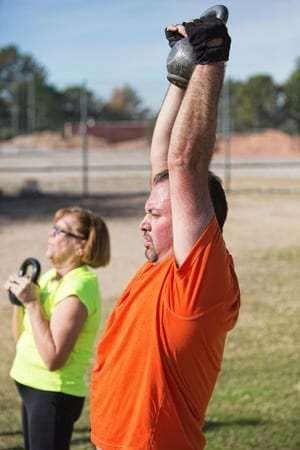 Recent scientific studies conducted of middle-aged to older males showed that high-intensity and weightlifting activities and training at a younger age had allowed them to grow and strengthen bone-density later on in life. This is significant, as many men—and women alike—fear that that high-intensity training and weightlifting causes back problems, injuries, and wears poorly on the body.
Recent scientific studies conducted of middle-aged to older males showed that high-intensity and weightlifting activities and training at a younger age had allowed them to grow and strengthen bone-density later on in life. This is significant, as many men—and women alike—fear that that high-intensity training and weightlifting causes back problems, injuries, and wears poorly on the body.
While it may be true that high-impact training and activities, such as sports and athleticism, can negatively damage your muscles and bones, it’s likewise true that with adequate strengthening training, conditioning, and stretching that such incidents can quite easily be avoided.
Interestingly enough, even those whom are naturally big-boned, are still just as easily prone to osteoporosis and other common bone-related health issues. However, through weight training and high-intensity sports from teenage to young adult years, bone density and bone health showed great improvements, size, and ability to withstand old age and fight off diseases such as osteoporosis.
Is it too late for me?
According to the American Journal of Men’s Health recent scientific studies and test-groups showed that even middle aged men, or those reaching their prime still have the opportunity to improve their bone health, and strength. Increasing bone density doesn’t take much in terms of hopping onto an adequate workout routine. The only catch is that such individuals must first ensure they are in good health. Understandably, forcing exercise—especially high impact—on a body that’s already otherwise sick or injured, will only exacerbate conditions and make the body weaker and sicker.
On the flip side, men who pick up high intensity workout training and weightlifting activities can expect bone density and growth improvements in as little as 6 months. With this, men are advised to start off their new workout or high-intensity training slowly. In fact, even pursuing ‘low intensity’ sports and exercise such as swimming can also improve bone health and density, but of course at a slower pace in comparison to more higher intensity training.
The National Institute on Health (NIH) recommends a slow-paced, healthy cardiovascular routine on a daily basis for males and females of any age—considering safe circumstances and good health. Such a “high intensity” workout could be as simple as walking for 45 minutes every day, and over time transitioning this into a light jog or bicycle ride routine every other day to improve heart condition and overall health—as well as, of course, strengthening and improving bone health and bone density.
Image credit: Scott Griessel
